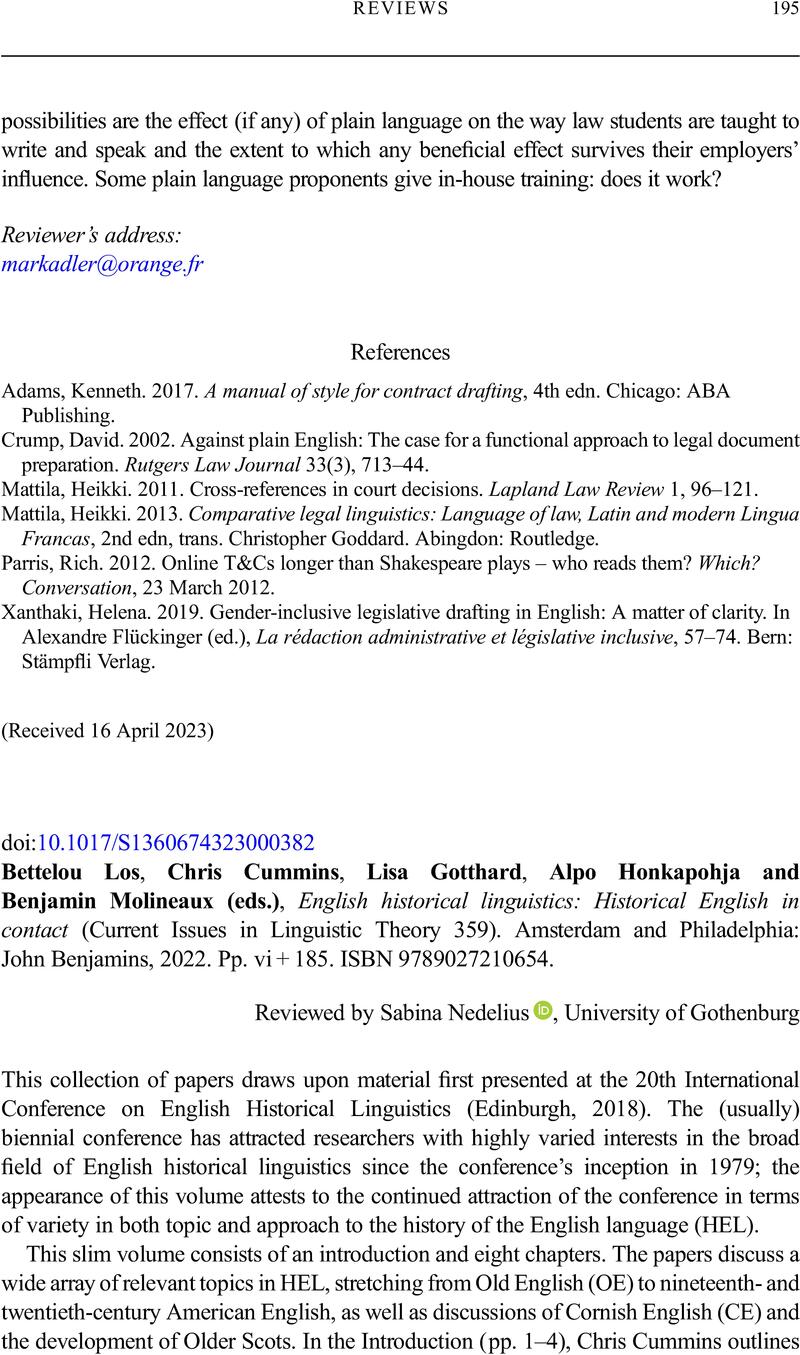No CrossRef data available.
Article contents
Bettelou Los, Chris Cummins, Lisa Gotthard, Alpo Honkapohja and Benjamin Molineaux (eds.), English historical linguistics: Historical English in contact (Current Issues in Linguistic Theory 359). Amsterdam and Philadelphia: John Benjamins, 2022. Pp. vi + 185. ISBN 9789027210654.
Review products
Bettelou Los, Chris Cummins, Lisa Gotthard, Alpo Honkapohja and Benjamin Molineaux (eds.), English historical linguistics: Historical English in contact (Current Issues in Linguistic Theory 359). Amsterdam and Philadelphia: John Benjamins, 2022. Pp. vi + 185. ISBN 9789027210654.
Published online by Cambridge University Press: 28 September 2023
Abstract
An abstract is not available for this content so a preview has been provided. Please use the Get access link above for information on how to access this content.

Information
- Type
- Book Review
- Information
- Copyright
- Copyright © The Author(s), 2023. Published by Cambridge University Press


